Set in a Tiffany & Co. necklace, it sold for $4.2 million, the highest price and price per carat paid for a Paraíba tourmaline at auction.
Column: Looking Back and Thinking Forward, Part II
Reflecting on the closing of his jewelry manufacturing firm in the 1980s, columnist Jan Brassem shares four personal observations about the current state of the jewelry industry.
The following is the second part of the history of the author’s U.S. jewelry manufacturing company, which experienced several simultaneous industry disruptions in the ‘70s and ‘80s.
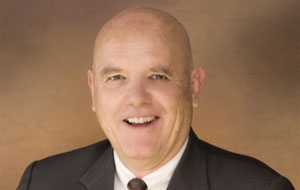
Part I of Looking Back and Thinking Forward, which detailed the boom time for jewelry manufacturers up until the 1980s, ran last week on National Jeweler.
By 1980, the disruptions were being felt quickly.
Best Products, a well-known national catalog showroom and our largest customer, was one of the first to change its format. Unable to meet competitive margins, they stopped selling popularly priced jewelry. Ultimately, the catalog showroom channel, including Service Merchandise, stopped selling jewelry altogether.
The Embassy Group, our consortium of 23 wholesalers, stopped selling jewelry after their customer, the independent jeweler, complained about their 50 percent markup. Evidently, the baby boomers and Gen Xers were looking elsewhere for affordable jewelry--imported goods, silver or costume trinkets--or just stopped buying jewelry.
Direct-mail “flyers” were next. Once considered an efficient jewelry channel (although they did clog mailboxes), they usually start price wars, proving that only consumers benefit. It’s not surprising that both warring parties lose market share, or worse.
Wait, there’s more.
While this was going on, computers were making inroads and, not surprisingly, quickly penetrated the industry. Implementing a computer operating system on a factory floor is challenging. Our installation was similar to a square-wheeled rollout.
Adding to the disruption, President Ronald Reagan’s economic recessions struck in 1980 and again in 1981. By now, discretionary consumer products, like jewelry, became difficult to sell.
Looking back on this difficult period, I’ve narrowed my experience into a number of personal observations. Here are four of them.
--Generational management. Successful jewelry firms that were marketers (IBGoodman), or manufacturers (Mercury Ring, The Aaron Group), or sold pearls (Mastoloni), or manufactured and marketed wedding rings (Frederick Goldman), were mostly family businesses. They generally weathered the storm.
Family-owned companies seemed to be stronger and more able to adjust to market complexities. Whether it’s because of family management cynosure--deeper experiences passed down from earlier generations--greater financial resources or something else is not clear.
It looks inward for answers, instead of outward for innovation.
Here are a few outward-facing, consumer-focused marketing strategies that entered my imagination. There are, of course, hundreds more.
1) Create a “New York Jewelry Week” with a glamorous red carpet (flash bulbs, limos and all) and a consumer product partner (i.e., luxurious watch, automotive, hotel or clothing company).
2) Negotiate with a major newspaper to have a page in their Sunday edition matching jewelry with celebrity outfits. (Note: Very little jewelry is shown--or worn--by celebrities and trend-setters in any national newspaper.)
3) Attend the annual South by Southwest Conferences and Festivals in Austin, Texas. Develop relationships with tech leaders and discover new ways to blend jewelry, or jewelry distribution channels, with technology that has consumer appeal. Has the innovative wearable technology movement already bypassed the industry? Was anyone watching?
--Mergers and acquisitions. Major changes--i.e., globalization, tech advances, price changes, management weakness and thin margins--are confronting today’s jewelry leaders. How to meet these problems should be one of management’s notable challenges.
Mergers or acquisitions occur when two or more organizations decide their combination will create greater value than if they did not combine their companies. The economic gains from these combinations, called synergistic gains, can be substantial. Please remember, M&A is the fastest way to grow a jewelry firm, diversify or acquire a competitor’s brand, compared to the traditional organic approach
Sherwood Management, for example, started with three family stores in southern California and, through a strategic M&A strategy, has grown to 72 stores. Sherwood, also known as The Daniels Company, is by no means unique. There are literally hundreds of U.S. and foreign jewelry firms that have grown from one independent unit to a business with multiple locations through M&A.
Once you’re involved in the M&A process, you’ll have moved away from your comfort zone of diamonds, gold and showroom décor and be transformed into a dynamic and enthusiastic strategic thinker. You will possess a new and exciting outlook on life.
--The industry needs leadership; a bona fide federation of trailblazers. With all the store closings, sales declines and inventory cutbacks, etc., it seems obvious that our industry has lost its ability to do things differently, its innovative focus. Gone are the days we can look to De Beers for a “A Diamond is Forever” consumer campaign or to anyone else, for that matter, to rescue the floundering industry.
What’s needed, simply, is a group of people, a committee of sorts, to look at the industry and shake it up to stop the negative “bleeding.” They will develop fresh initiatives, perspectives and, if necessary, replicate how things are done in industries that had similar issues.
The “Rainmaker Committee” is a properly funded organization and led by a non-jewelry executive who’s been through these issues in the past.
Here are a few of my “new guard” nominations. You should have others.
-- Chairperson: Martin Lindstrom, revolutionized supermarket industry
-- Andrea Hill: e-commerce and social media expert
-- Andrea Hanson: big-picture thinker, branding expert
-- Mindy Grossman: CEO, HSN
-- Paola de Luca: global trend forecaster
-- Harvey Kanter: CEO, Blue Nile
Jan Brassem is a senior partner at MainBrace Global Partners, a global jewelry advisory and M&A firm with offices in New York and Hong Kong. You can e-mail him at Jan-at-MainBraceGlobalPartners.com.
The Latest
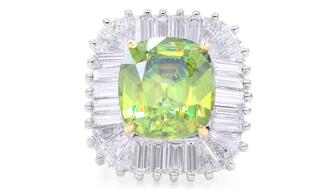
Take luxury gifting to new heights this holiday season with the jeweler’s showstopping 12-carat sphene ring.
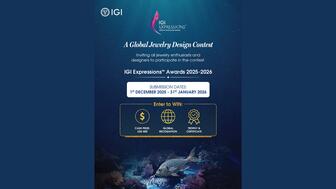
This year's theme is “Unveiling the Depths of the Ocean.”

How Jewelers of America’s 20 Under 40 are leading to ensure a brighter future for the jewelry industry.

In its annual report, Pinterest noted an increase in searches for brooches, heirloom jewelry, and ‘80s luxury.


Starting Jan. 1, customers can request the service for opal, peridot, and demantoid garnet.

The 111-year-old retailer celebrated the opening of its new location in Salem, New Hampshire, which is its third store in the state.

Roseco’s 704-page catalog showcases new lab-grown diamonds, findings, tools & more—available in print or interactive digital editions.

The filmmaker’s personal F.P. Journe “FFC” prototype was the star of Phillips’ recent record-setting watch auction in New York.

The new location in the Design District pays homage to Miami’s Art Deco heritage and its connection to the ocean.

Inflations, tariffs, and politics—including the government shutdown—were among consumers’ top concerns last month.
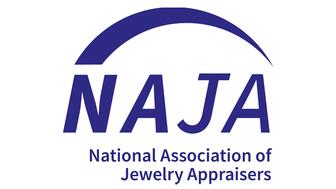
“Longtime favorite” presenters, as well as first-time speakers, will lead talks and workshops at the annual event in Tucson next year.
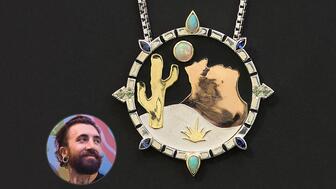
Silas Smith of Meridian Metalworks won the challenge with his pendant that blends Australian and American landscapes.
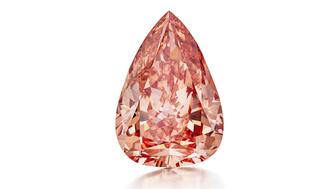
The sale of the 31.68-carat, sunset-hued stone was part of Sotheby’s first series of events and auctions in Abu Dhabi.

Most customers who walk into your store this month have made up their minds. Your job is to validate their choice, Emmanuel Raheb writes.

The collection features characters and motifs from Ukrainian folklore, including an enchanted mirror and a magic egg.

MatrixGold 3.11, the newest version of the jewelry design program, offers more flexibility, precision, and creative control.

The pavilion will be part of the 2026 JA New York Spring show, scheduled for March 15 to 17.

Kadet, a 1994 National Jeweler Retailer Hall of Fame inductee, helped grow the family-owned retailer in the Chicago area and beyond.

Billed as the world’s smallest wearable, Lumia Health’s new smart earrings have a health tracker subtly embedded in the back.
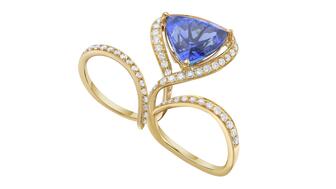
Don’t let those with December birthdays feel blue. Help them celebrate their month with blue zircon, turquoise, and tanzanite.

The new pink sapphire version of the piece dances with its wearer in the brand’s “Icons After Dark” holiday campaign.

A choice that’s generated a lot of commentary, Pantone says “Cloud Dancer” marks a fresh start and encourages relaxation and creativity.
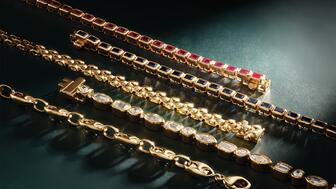
The manufacturer’s holiday campaign features a gift guide filled with trending designs and jewelry that can be personalized.

The man was charged with theft, accused of ingesting the necklace while in a jewelry store in Auckland, New Zealand.

The Florida independent expanded its store from 8,000 to 14,000 square feet, fulfilling the vision of its late co-founder, Jim Dunn.
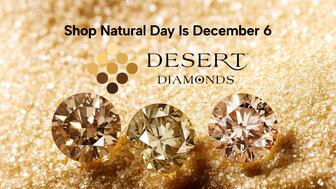
Sponsored by De Beers Group



























